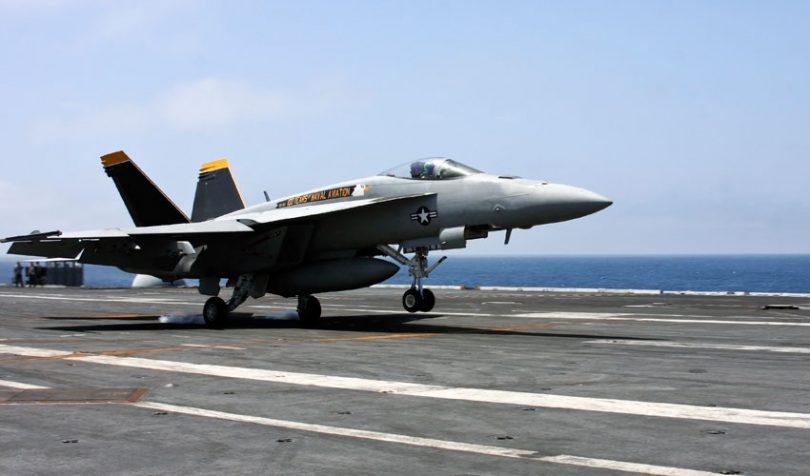The US Navy is exploring using blockchain to track aviation parts. Tracking details about the origin and history of important aircraft components is time-consuming and expensive. Currently, when a part is delivered details are written on a Scheduled Removal Component Card and typed into a database. Research is underway to see if a permissioned blockchain will do a better job.
Naval Air Systems Command (NAVAIR) in the Southwest has partnered with Indiana Technology and Manufacturing Companies (ITAMCO), which developed the SIMBA Chain. The blockchain protocol is the result of a DARPA project for tracking secure messages.
As part of the agreement with NAVAIR, the company says that “the Navy gets access to cutting-edge chain code as well as innovative protocols that can quickly and securely recall large data sets.”
The agreement aims to develop a conceptual blueprint for a connected and transparent supply chain. One of the biggest challenges is the credibility of the data that’s input and accreditation of users in a permissioned environment. This contrasts with a centrally controlled DoD database.
ITAMCO commented: “When all of the nodes supporting a supply chain become connected, it increases the vulnerability so special consideration must be given to cyber-security.”
“The Navy is very excited to work with ITAMCO on this cutting-edge technology to improve visibility, anti-tampering, traceability and data transparency in the NAVAIR supply chain,” said George Blackwood, Logistics Management Specialist, North Island Fleet Support Team.
Aerospace blockchain projects
Two months ago Accenture and Thales demonstrated an aerospace blockchain prototype at England’s Farnborough Air Show. The aims were not dissimilar to the NAVAIR project. Thales’ solution involves tracking, tracking and authenticating aircraft parts.
Following research, Accenture predicts that 86 percent of aerospace or defense companies will adopt blockchain by 2021. Accenture also identified data integrity as a major issue.






